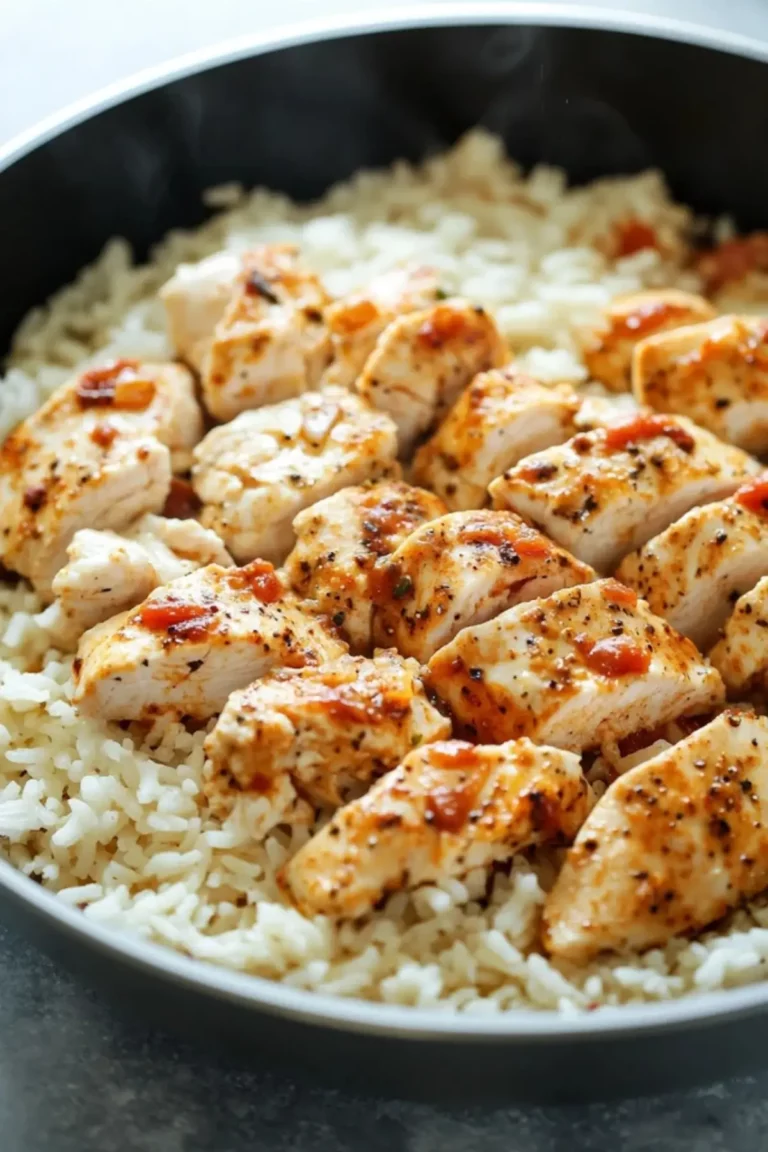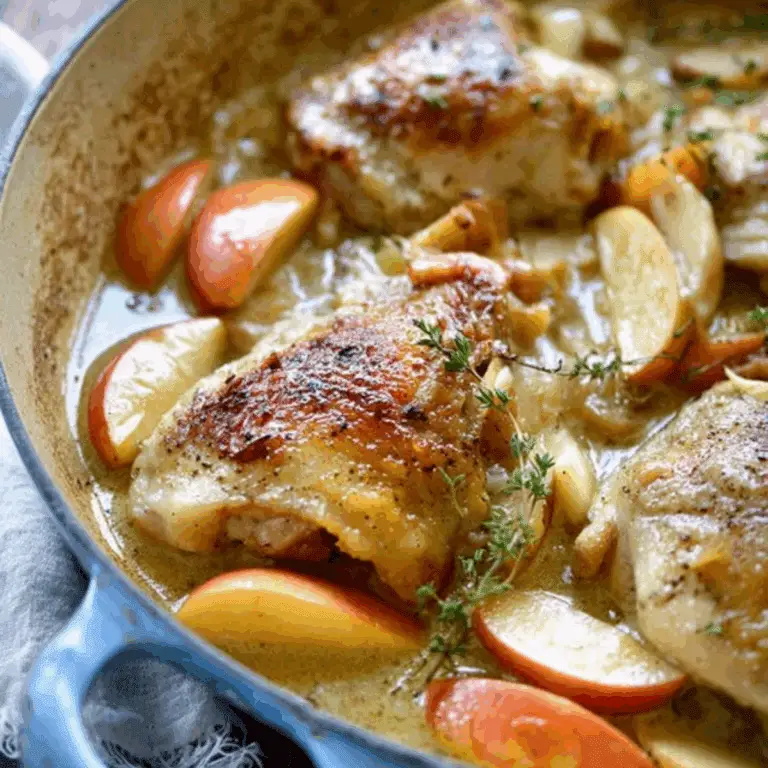Salmon has always held a special place in my heart. I remember the first time I tried to cook a fish dinner on my own—I was a college student, nervous in my tiny kitchen, hoping not to set off the fire alarm. The result? A slightly overcooked but flavorful piece of salmon that planted the seed for my cooking journey. Today, I want to share a baked teriyaki salmon recipe that’s far more reliable and beginner-friendly than my college attempt. It’s easy, wholesome, and, best of all, made in a single pan.
This Baked Teriyaki Salmon dish fits perfectly into the world of quick and healthy meals. With minimal prep and clean-up, it’s an ideal easy sheet pan dinner for busy nights. The teriyaki glaze adds a glossy, rich flavor without the need for complicated techniques. Whether you’re new to the kitchen or just want something you can throw together after work, this lemon herb chicken-style baked salmon dish is a win.

Why This Recipe is Special
Baked Teriyaki Salmon stands out because it delivers maximum flavor with minimum effort. The homemade teriyaki sauce is made from basic pantry ingredients, giving you control over sweetness and sodium. The salmon bakes quickly and evenly in the oven, staying juicy inside with a lightly crisp top if you choose to broil. It’s naturally high in omega-3 fatty acids and protein, making it a powerhouse choice for anyone trying to eat well without fuss. And with one baking sheet and under 30 minutes, this is one of the easiest ways to introduce yourself—or someone else—to cooking fish at home.
Ingredients and Preparation
Salmon Fillets
The star of the show. Choose center-cut fillets for even cooking. Salmon is rich in healthy fats, providing tenderness and a naturally buttery flavor.
Soy Sauce
Adds deep umami and saltiness. For a lighter taste, use low-sodium soy sauce or swap in coconut aminos if avoiding soy.
Honey or Maple Syrup
This is the sweet balance to the soy sauce’s salt. Honey brings a floral depth, while maple syrup offers an earthy touch.
Garlic (Minced)
Brings savory warmth. Freshly minced garlic will be more aromatic than pre-minced or powdered.
Fresh Ginger (Grated)
Adds brightness and a touch of spice. Ginger also has anti-inflammatory properties and enhances the sauce’s complexity.
Rice Vinegar or Lemon Juice
These introduce a subtle acidity that balances the sauce. Lemon juice can give a citrusy lift if you don’t have rice vinegar.
Cornstarch
Used to thicken the sauce for a glossy finish that clings to the salmon. Arrowroot powder is a great substitute.
Optional Garnishes: Sesame Seeds and Chopped Green Onions
These elevate presentation and add crunch and freshness.
Step-by-Step Instructions
Step 1 Start by making the teriyaki glaze: In a small saucepan over medium heat, combine soy sauce, honey, garlic, ginger, and rice vinegar. Stir gently and bring to a low simmer. Separately, mix cornstarch with a bit of water, then pour that slurry into the saucepan. Continue to stir for another minute or two until the sauce thickens enough to coat the back of a spoon.
Step 2 Preheat your oven to 400°F (200°C). Line a sheet pan with parchment paper or aluminum foil to keep things mess-free. Pat the salmon fillets dry with a paper towel, then place them skin-side down on the lined tray, spaced evenly.
Step 3 Use a basting brush or spoon to coat each salmon fillet generously with the teriyaki glaze. Leave a small amount of sauce aside for finishing the dish after baking.
Step 4 Bake in the center rack of the oven for 12–15 minutes. The salmon is done when it flakes easily with a fork and the internal temperature hits 145°F. The cook time depends slightly on the thickness of your fillets.
Step 5 For a golden, caramelized finish, switch the oven to broil for the final 2–3 minutes of baking. Watch closely to avoid burning the glaze.
Step 6 Remove from the oven, drizzle the reserved teriyaki sauce over the top, and garnish with sesame seeds and green onions if desired. Serve immediately while warm.

Beginner Tips and Notes
If your salmon is browning too quickly, lightly tent the tray with foil during the last few minutes of baking.
If your sauce is too thick, add a splash of water while it simmers. Too runny? Simmer a bit longer or add another half teaspoon of cornstarch slurry.
Always pat your salmon dry before glazing—it helps the sauce stick and ensures better browning.
No garlic press? Just smash the garlic clove with the flat side of a knife and mince it with a rocking motion.
Frozen salmon works well too—just thaw it fully in the fridge overnight and pat dry before baking.
Serving Suggestions
Pair your baked teriyaki salmon with fluffy jasmine or brown rice for a satisfying base. For a low-carb option, cauliflower rice or quinoa makes a great swap. Add steamed or stir-fried vegetables like broccoli, snap peas, or bok choy to round out the meal. You can also top a big green salad with warm flaked salmon and a drizzle of leftover teriyaki glaze for a light lunch.
Store leftovers in an airtight container for up to 3 days. To reheat, place the salmon in a low oven (around 300°F) or warm gently in the microwave with a splash of water and covered to avoid drying out. This dish also tastes great cold, flaked over salad or tucked into a wrap.
Conclusion
This easy sheet pan dinner proves that bold flavor doesn’t require a long ingredient list or advanced skills. With its sweet-savory glaze and fork-tender salmon, this Baked Teriyaki Salmon is a go-to for quick and healthy meals. If you’re just getting started in the kitchen, this recipe is a great confidence booster. Give it a try, and let me know how it turned out for you—I’d love to hear your take or answer any questions in the comments!
FAQ About Baked Teriyaki Salmon
Q1: Can I use frozen salmon for this recipe?
Yes, frozen salmon works well. Just thaw it completely in the refrigerator overnight and pat it dry before applying the glaze and baking.
Q2: How do I know when the salmon is fully cooked?
The salmon is done when it flakes easily with a fork and reaches an internal temperature of 145°F. The surface should look opaque and slightly caramelized.
Q3: Can I make the teriyaki sauce ahead of time?
Absolutely. You can make the sauce up to 3 days in advance. Store it in an airtight container in the fridge and warm it slightly before using.
More Relevant Recipes
- Sweet and Savory Honey Glazed Salmon
- Hot Honey Salmon Bites
- Baked Parmesan Garlic Herb Salmon in Foil

Baked Teriyaki Salmon
- Total Time: 25 minutes
- Yield: 4 servings 1x
- Diet: Low Calorie
Description
This Baked Teriyaki Salmon is a quick and healthy meal featuring flaky salmon fillets glazed with a sweet-savory homemade teriyaki sauce, perfect for beginner cooks.
Ingredients
- 4 salmon fillets (about 6 oz each)
- 1/3 cup soy sauce (low-sodium preferred)
- 1/4 cup honey or maple syrup
- 2 tbsp rice vinegar or lemon juice
- 1 tbsp sesame oil
- 2 garlic cloves, minced
- 1 tsp grated fresh ginger
- 1 tsp cornstarch
- 1 tsp water
- 1 tbsp sesame seeds (optional, for garnish)
- 2 green onions, chopped (optional, for garnish)
Instructions
- Preheat your oven to 400°F (200°C). Line a baking sheet with parchment paper or aluminum foil.
- In a small saucepan over medium heat, combine soy sauce, honey, garlic, ginger, rice vinegar, and sesame oil. Simmer gently.
- Mix cornstarch with water to make a slurry, then stir it into the sauce and cook until thickened. Remove from heat.
- Place salmon fillets skin-side down on the prepared baking sheet. Brush each with a generous amount of teriyaki glaze.
- Bake for 12–15 minutes, until the salmon is cooked through and flakes easily with a fork.
- Optional: Broil for 2–3 minutes for a caramelized top. Watch closely to prevent burning.
- Drizzle with reserved teriyaki sauce and garnish with sesame seeds and chopped green onions before serving.
Notes
- For a spicier version, add a pinch of red pepper flakes to the sauce.
- Don’t overcook the salmon—check around the 12-minute mark for doneness.
- Leftover salmon can be refrigerated for up to 3 days.
- Use parchment paper or foil to prevent sticking and make cleanup easier.
- Prep Time: 10 minutes
- Cook Time: 15 minutes
- Category: Main Course
- Method: Baking
- Cuisine: Asian-Inspired
Nutrition
- Serving Size: 1 salmon fillet with sauce
- Calories: 300
- Sugar: 10g
- Sodium: 600mg
- Fat: 15g
- Saturated Fat: 3g
- Unsaturated Fat: 12g
- Trans Fat: 0g
- Carbohydrates: 12g
- Fiber: 0g
- Protein: 30g
- Cholesterol: 75mg






